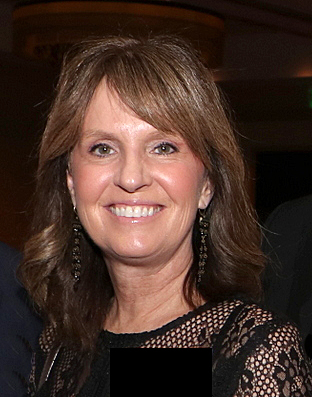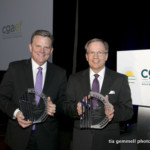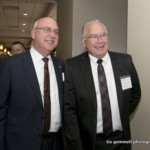Heading 2
Lorem ipsum dolor sit amet, consectetur adipisicing elit. Nostrum minus ea suscipit porro alias corporis libero at. Perferendis omnis, veniam nemo beatae vel? Tempora numquam a repellat eaque natus, magnam?
Heading 2
Lorem ipsum dolor sit amet, consectetur adipisicing elit. Autem ipsum mollitia neque, illum illo excepturi, eum incidunt fugit nostrum est, voluptate eaque minima corporis debitis at, dolores ipsam. Quaerat, dolores.
Heading 2
Lorem ipsum dolor sit amet, consectetur adipisicing elit. Autem ipsum mollitia neque, illum illo excepturi, eum incidunt fugit nostrum est, voluptate eaque minima corporis debitis at, dolores ipsam. Quaerat, dolores.
Heading 2
Lorem ipsum dolor sit amet, consectetur adipisicing elit. Autem ipsum mollitia neque, illum illo excepturi, eum incidunt fugit nostrum est, voluptate eaque minima corporis debitis at, dolores ipsam. Quaerat, dolores.
Heading 2
Lorem ipsum dolor sit amet, consectetur adipisicing elit. Autem ipsum mollitia neque, illum illo excepturi, eum incidunt fugit nostrum est, voluptate eaque minima corporis debitis at, dolores ipsam. Quaerat, dolores.
By Len Lewis and Tim James
Everything in a grocery store includes packaging of some type. If it’s not packaged by the manufacturer, it’s packaged in-store by the grocer. Even loose products like produce and bulk foods are packaged, usually by the consumer, in some manner.
Packaging is normal, necessary and simple. But with rapidly changing considerations by consumers and their political leaders that include climate change, waste reduction, recyclability and sustainability is food packaging still a simple thing? Or, has it always been complicated?
Packaging is normal, necessary and simple. But with rapidly changing considerations by consumers and their political leaders that include climate change, waste reduction, recyclability and sustainability is food packaging still a simple thing? Or, has it always been complicated?
In 1988, the City of Berkeley started the regulation of food packaging and banned chlorofluorocarbons as an ingredient – a key component of foam at the time. While not much came from the effort, with the plastics manufacturers voluntarily removing these chemicals from packaging before the ordinance’s implementation, it set a precedent that many more cities would follow.
More than 30 years later, California is now home to more than 120 local ordinances regulating food packaging in one manner or another, with some ordinances being more onerous than others.
Well-crafted food packaging regulation strikes a balance between the environmental gain and the necessity for safe and quality food items.
However, some local jurisdictions have placed more emphasis on the environmental side of the equation. The unfortunate result is grocers facing decisions to either make wasteful decisions, or discontinue product sales to comply.
Examples of unbalanced local food packaging regulation include the City of Santa Monica, whose city council passed an ordinance calling for only using “marine degradable” food packaging for all food items.
The problem with the ordinance is that “marine degradable” food packaging per their definition does not exist. While it had initially received an ASTM standard, it was abandoned four years ago and no manufacturer is offering the product. Beginning this summer there will not be a food retailer in Santa Monica that will have compliant food packaging. How could this regulation get so far out of balance?
Santa Monica elected officials stated they were so concerned about food packaging becoming litter and marine debris that they regulated to an unrealistic standard requiring all food packaging to fully degrade after 120 days in the ocean.
Despite input from the grocery industry that this would result in most
food items prepared in-store from being unavailable for sale, they chose to
assume all food packaging could or would end up in the ocean.
Just up the road from Santa Monica, the City of Malibu passed food packaging regulations requiring all raw meat products be packaged in recyclable or compostable packaging whether it was packaged in-store or packaged outside the city and delivered to the store.
Even with a delayed implementation, grocers are unable to be fully compliant. In attempting to comply, grocers have either had to repackage meat products delivered to the store into compostable packaging – doubling the waste – or simply discontinue the sale of some products.
It is important to note that Malibu doesn’t provide for compostable product disposal for its citizens. Again, it was a city council’s focus on potential environmental impacts and not the safety and quality of food which was overly weighted.
Other jurisdictions have taken note of the environmentally-friendly ordinances passed by Santa Monica and Malibu and are looking to enact similar policies. Unfortunately, in doing so they are putting food safety and supply at risk, despite hearing directly from grocers and the California Grocers Association that grocery food packaging is different from restaurant-style food packaging often found as litter and debris in their communities.
“There’s no doubt retailers are seeing growing policy reaction at the local level on what packaging should be allowed in their community,” said Mark Murray, Executive Director of Californians Against Waste, one of the largest environmental advocacy organizations in the country, and a close ally of CGA in the battle for common sense regulations. “Joining with the retail sector, we believe that it’s time for a uniform statewide policy.”
Jeff Hall, Division Meat and Seafood Merchandiser for Ralphs Grocery Co., agrees.
“We’re working with the State Legislature to get more involved and to institute some type of blanket policy rather than have each municipality initiate their own regulations,” Hall said, pointing to areas like Malibu, San Diego and Manhattan Beach.
“This would take some of the burden off grocers and get manufacturers to think differently about some of the products they offer in the stores,” he added, noting that headway is being made on some common-sense regulations with CGA leading the charge.
Manufacturers are well aware of the issues and are working on several fronts, noted Lee Anderson, Director of Global Issues Management and Public Affairs for General Mills. In addition to the company’s own initiatives, he works closely with the American Institute for Packaging and the Environment (AMERIPEN) to focus on policy at the state and local levels. The company also is a member of the Sustainable Packaging Coalition.
“AMERIPEN is material neutral so we’re not focused on one type of packaging,” Anderson said. “We found it a more effective way to present a broader voice on public policy issues. We are engaged in some discussions at the national level and the EPA has put out some very general guidelines. But the reality is that packaging policy is, for the most part, made at the state and local level.”
Time may be of the essence, according to Murray.
“The issue of packaging has reached a critical point because citizens and regulators believed we were recycling more grocery packaging than we were,” Murray said. “We’ve been recycling soft drink bottles, glass and metal containers but, for the last decade, sending mixed paper and plastics overseas to places like China, Indonesia, Malaysia and the Philippines where brokers sorted through the mix for PET bottles, aluminum cans and clean paper.”
Murray noted that in 2017, California exported 13,000 tons of recyclable materials overseas, with more than half exported to China.
The problem, according to Murray and other industry observers, is that China is now telling its private brokers they can no longer accept mixed paper and plastic,
only clean and clear paper and plastic. This means the mixed stream, previously a source of revenue, has become a disposal cost and more is being landfilled.
This is leading to a lot of proposals on single-use plastics.
“A ban on single-use plastics will have broad implications for retailers which are also foodservice providers and who are caught up in a torrent of local regulations. It’s not clear yet what direction these proposals may take – whether they will be grandfathered in, or pre-empted by state regulations. All that has yet to be determined,” Anderson noted, adding that it’s a good bet all this will increase retailer costs.
“Regulators in California are trying to decide what to next,” Murray said. “Supermarkets are caught in the middle of all these discussions. More local governments are attempting to restrict food-to-go packaging.”
He added that about 100 different cities have passed some ordinances restricting takeout packaging, primarily polystyrene. Municipalities like Malibu, Santa Monica, San Francisco and Oakland have adopted even more comprehensive strategies.
Grocers have already stepped up to the plate, replacing polystyrene with polyethylene terephthalate (PET) for bakery item packaging, and there is potential to replace dairy item packaging like margarine tubs and yogurt. These and other initiatives are particularly urgent for private label products since retailers are considered to be the brand owners.
“There’s no doubt the grocery industry is willing to do its part by
internalizing some of the cost. But there needs to be a uniform statewide
structure,” Murray said.
“I have a lot of confidence in the team at CGA to work this out,” he added. “They are as skilled and influential as anyone in Sacramento and they need the go-ahead from its membership to support a comprehensive policy.
“This is where we were with plastic bags eight years ago. We can spin our wheels and have hundreds more local, piecemeal ordinances for the next four years, or come together for a statewide solution.”
Retailers are dealing with this regulatory conundrum as efficiently as possible.
“In Malibu, we were instructed to remove all polystyrene from the building. It didn’t just affect meat, but also grocery and general merchandise,” noted Hall. However, according to Hall, there were issues with implementation and the city is reassessing the situation.
Meanwhile, Ralphs came up with a compostable tray for Malibu from several suppliers. However, there’s also the issue of styrofoam cups and coolers to be replaced.
“Those replacements are hard to find,” Hall said. “If it was mandated tomorrow that we had to switch away from polystyrene, finding good replacements would be extremely difficult.”
According to Hall, the company removed about 100 SKUs from the Malibu store to comply with regulations.
“This has limited customer choices and they are going outside the city to buy these items and bringing them back,” Hall said. “So, the city still has to deal with the trash issue.”
The bottom line has been a double-digit decline in revenue in the meat department which can be traced directly to the packaging issue, said Hall.
“A company like Foster Farms supplies chicken nationally and does it in such a way that’s most cost-effective for them,” he said. “They’re not going to change what they do for one grocery store in Malibu. That’s what we’re facing today.”
However, Ralphs has worked with Foster Farms for some of its private
label items.
“They have a couple of SKUs that are plastic rather than Styrofoam,” he said. “Basically, we have to truck those items from Northern California to our distribution facility in Los Angeles and reship them to the Malibu store,” Hall said. “This takes days of life off the products not to mention the gasoline and carbon footprint we’re putting down.”
In some instances, grocers removed products from banned packaging in the store into an alternative package.
“We won’t do that for safety reasons,” said Hall. “Once you remove a product from packaging that has a federally inspected seal on it, you can’t trace it back, Basically, you’re doubling the amount of trash and creating a potential food safety issue.
“We are working with the state to institute some kind of blanket policy that would take the burden off grocers and get manufacturers to think differently about some of the products they offer in the stores,” he said, noting that Ralphs’ parent company Kroger is taking the lead in speaking with the vendor community.
Meanwhile, the company is deeply involved in its Zero Hunger Zero Waste Initiative, with a goal to eliminate both by 2025 in the communities its stores serve. In the interim, the company, as part of its sustainability goal, aims to divert 90 percent or more of waste in its operations from landfills by 2020.
At Ralphs it’s about recycling wherever possible, according to Hall. This means no cardboard in the dumpsters, recycling plastic wrap and asking customers to bring plastic bags back to the stores.
General Mills also has an ambitious program to have 100 percent of its packaging recyclable by 2030. Just one example is the Cascadian Organic brand cereal which uses a liner produced with biomaterial and is fully recyclable, Anderson noted.
This is only one initiative in the company’s target goals. This includes: Reducing greenhouse gas emissions within its packaging supply chain or 7 percent of its total value chain emissions and a commitment to sustainably source 100 percent of its fiber packaging by 2020. This will achieve zero waste to landfill at 30 percent of General Mills production facilities by 2020 and 100 percent by 2025.
These and other initiatives are creating opportunities for the grocery industry to address legislators.
“The reality is that retailers, brand manufacturers and packagers have been responding to the waste issue,” Anderson said. “Everyone is tweaking it differently but the major companies are investing a lot of resources in helping packaging manufacturers develop recyclable alternatives and new packaging formats.”
However, Anderson and others emphasized that consumer attitudes and input are an important part of the equation.
“People care. We’ve heard more from consumers about plastics in particular –specifically ocean plastics,” said Anderson. “They are reaching out, asking questions and wanting more information about packaging. They buy our brands but they’re buying them from CGA members. We want to make sure we’re sharing information with people, addressing the issues and providing options.”
As a recent report from research firm GlobalData reported: “With increasing public awareness of the harm plastic has on the environment, consumers are increasingly seeking a relationship with retailers and manufacturers that extends beyond a mere transaction. With increasing government legislation, consumers across all generations, particularly the young, are adapting their purchasing behavior in line with the ethics and values of retailers and manufacturers.”
One way the company engages people is through collaborative partnerships with organizations like the Sustainable Packaging Coalition which has developed a program called How2Recycle. This program consists of a standardized labeling system that offers clear instructions to consumers on recycling metal, paper and plastics.
The goal is to reduce confusion on the part of the public, improve the reliability and transparency of recyclability claims, provide a labeling system that follows FTC Green Guides and increase the availability and quality of recycled material. General Mills is adding it to an increasing number of packages, Anderson said.
In spite of industry efforts and burgeoning efforts by state legislators to reduce plastic packaging, local jurisdictions will no doubt continue crafting ordinances of varying quality.
Most California food packaging ordinances focus on eliminating packaging types being used for convenience purposes, generally meaning food packaging used by restaurants for take-out items.
They recognized the intricacies and challenges of grocery food packaging, with exemptions included for food items common in the grocery store setting and nowhere else, like raw meats and baked goods.
Unfortunately, the recent lack of recognition by some environmental advocates and local government decision-makers has raised the alarm for the grocery industry.
Where folks get lost is not realizing their six-pack of blueberry muffins baked in-store requires food packaging that can handle several days on the store shelf, consumers shuffling packages to pick their favorite, transportation in the store and to their home, and, finally, sitting on the kitchen counter for up to six days as a muffin is consumed each morning.
“Grocers need to package these six muffins to remain safe and retain their quality for up to 10 days,” said CGA’s Aaron Moreno, Senior Director, Government Relations. “This is far from a simple accomplishment, but very few think about these challenges.
“As legislators set out to craft a statewide policy on single-use plastic and food packaging, there is much hope by the grocery industry – both retailers and manufacturers – that the special needs of the industry are recognized and addressed,” he added.
Much like it was when the Legislature set out to create a uniform state policy on single-use plastic bags, CGA stands ready to provide its expertise in service of a policy that truly balances food safety and shelf life with environmental sustainability. To find food packagings in your areas of operation, visit our Local Ordinance Database.




























































































































